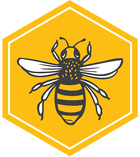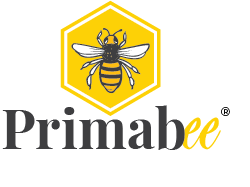Glossary of Terms
CBD Glossary (Alpha)
A
Aerobic Count — The results of a Total Aerobic Count (TAC) test is an indication of bacterial contamination on a cannabis sample. In the food industry, testing labs use TAC tests to gauge a manufacturer’s sanitary quality and adherence to good manufacturing practices. However, TAC tests are unable to differentiate between pathogenic, beneficial, and benign bacteria, making them poor indicators of safety. A low TAC result does not mean a cannabis sample is free of pathogens. A high TAC result doesn’t mean a sample it is harmful to consumers. This is especially true in cannabis, which has a diverse microbiome of beneficial microbes that are not harmful to humans. For example, many organic cannabis growers use Bacillus subtilis, an aerobic bacterium, as a fungicide.
Agriculture Act of 2014 — The Agricultural Act of 2014, formerly the "Federal Agriculture Reform and Risk Management Act of 2013", is an act of Congress that authorizes nutrition and agriculture programs in the United States for the years of 2014-2018. The bill authorizes $956 billion in spending over the next ten years.
Anandamide — Anandamide, also known as N-arachidonoylethanolamide, is a fatty acid neurotransmitter derived from the non-oxidative metabolism of eicosatetraenoic acid, an essential omega-6 fatty acid. The name is taken from the Sanskrit word Ananda, which means "joy, bliss, delight", and amide.
Anhydrous — A substance is anhydrous if it contains no water. Many processes in chemistry can be impeded by the presence of water, therefore, it is important that water-free reagents and techniques are used. In practice, however, it is very difficult to achieve perfect dryness; anhydrous compounds gradually absorb water from the atmosphere so they must be stored carefully.
B
Bioavailable CBD — Bioavailability is the proportion of any compound or substance that enters the bloodstream when introduced to the body. This value varies due to many factors that affect absorption. However, the most determinant factor is the way it is administered. There are four ways in which substances can enter the bloodstream: inhalation, ingestion, absorption, and injection. This article outlines what bioavailability means for any compound, including medicines or substances found in food for example.
Broad-Spectrum — Broad spectrum CBD is CBD that has been extracted from the cannabis plant with all the other compounds from the plant except for THC. That means it contains terpenes, essential oils, and other cannabinoids from the plant.
Broad-Spectrum CBD — contains cannabidiol and all the other compounds within the plant, save for THC, which is completely removed after the initial extraction. In a very simplified manner, broad-spectrum CBD is like a mix between full-spectrum CBD and CBD isolate. It contains the entire spectrum of cannabinoids EXCEPT for the THC part.
Full-Spectrum CBD — If an extract is full-spectrum, this means it contains all phytochemicals naturally found in the plant, including CBD, trace cannabinoids, terpenes, and essential oils. Full-spectrum extracts from hemp also come with a negligible THC content — below 0.3%
C
Camphor— (Cinnamomum camphora) is a terpene (organic compound) that's commonly used in creams, ointments, and lotions. Camphor oil is the oil extracted from the wood of camphor trees and processed by steam distillation. It can be used topically to relieve pain, irritation, and itching.
Cannabichromene (CBC) — This third most common cannabinoid, also non-psychoactive, is thought to support mood and joint and muscle function.
Cannabidiol (CBD) — The second most common cannabinoid produced by the cannabis plant that is non-psychotropic (it doesn’t get you high).
Cannabidivarin (CBDv) — Similar to CBD in its effects.
Cannabigerol (CBG) — Non-psychoactive and used to support mood and joint and muscle function.
Cannabinoids — Cannabinoids are active compounds produced by all cannabis plants. They account for most of the benefits of cannabis. Cannabinoids found in plants are technically called phytocannabinoids. Phytocannabinoids mimic compounds which we call endocannabinoids that are produced naturally by all mammals.
Cannabinoid Receptor Type 1 (CB1) — Cannabinoid receptor type 1 (CB1), also known as cannabinoid receptor 1, is a G ... CB1 is antagonized by the Phyto cannabinoid tetrahydrocannabivarin (THCV). The primary endogenous agonist of the human CB1 receptor is anandamide.
Cannabinoid Receptor Type 2 (CB2) — The cannabinoid system continues to receive attention as a therapeutic target. The cannabinoid type 2 (CB2) receptor is primarily expressed only when there is active inflammation and appears to be devoid of undesired psychotropic effects or addiction liability.
Cannabinol (CBN) — Believed to support joint and muscle function and aid a good night’s rest.
CBD Oil — A concentrate, tincture, or cannabis extract with a high concentration of cannabidiol (CBD), typically extracted from marijuana or industrial hemp.
Cannabis Indica — Cannabis Indica is an annual plant in the family Cannabaceae. It is a putative species of the genus Cannabis. Whether it and Cannabis sativa are truly separate species is a matter of debate. The Cannabis Indica plant is cultivated for many purposes; for example, the plant fibers can be converted into cloth.
Cannabis Sativa — Cannabis sativa is an annual herbaceous flowering plant indigenous to eastern Asia but now of cosmopolitan distribution due to widespread cultivation. It has been cultivated throughout recorded history, used as a source of industrial fiber, seed oil, food, recreation, religious and spiritual moods, and medicine.
Carrier Oil — Carrier oil, also known as base oil or vegetable oil, is used to dilute essential oils and absolutes before they are applied to the skin in massage and aromatherapy. They are so named because they carry the essential oil onto the skin. Diluting essential oils is a critical safety practice when using essential oils.
Certificate of Analysis (COA) — A Certificate of Analysis is a document issued by Quality Assurance that confirms that a regulated product meets its product specification. They commonly contain the actual results obtained from testing performed as part of quality control of an individual batch of a product.
D
Delivery Method — A delivery method is a standardized procedure for transferring the product or service to the destination of fulfillment chosen by the customer. Delivery methods are characterized by the means of transportation used, and by the organization or group that is the contracting party for the sending organization or person.
E
Edible or Edibles — CBD edibles are edible products such as gummies, candy, cookies, brownies, and other food or drinks that contain cannabidiol. Cannabidiol (CBD) is one of the many cannabinoids that occur naturally in the hemp plant. CBD is often used for its potential health benefits, and edible products are a great way to take CBD oil as a dietary supplement
Endocannabinoids — Cannabinoids produced by human or other mammal bodies.
Entourage Effect — The entourage effect happens when CBD is ingested with other compounds from the cannabis plant, rather than in isolation. The theory is that by using the whole hemp plant rather than a singular aspect, there's a boost in the health benefits and overall therapeutic effect of cannabinoids.
F
Farm Bill 2018 — The 2018 farm bill or Agriculture Improvement Act of 2018 is United States legislation that reauthorized many expenditures in the prior United States farm bill: The Agricultural Act of 2014. The $867 billion reconciled farm bill was passed by the Senate on December 11, 2018, and by the House on December 12.
Flavonoids — Flavonoids are a class of polyphenolic plant and fungus secondary metabolites. Chemically, flavonoids have the general structure of a 15-carbon skeleton, which consists of two phenyl rings and a heterocyclic ring. This carbon structure can be abbreviated C6-C3-C6
Full-Spectrum — Full-Spectrum means that an oil or product contains all the cannabinoids that are naturally occurring in the cannabis plant. Quality full spectrum CBD products are typically high in CBD, with only trace amounts of minor cannabinoids, and exceptionally low in THC (less than 0.3%).
G
GMO — A genetically modified organism is any organism whose genetic material has been altered using genetic engineering techniques
GMP — Good manufacturing practices are the practices required in order to conform to the guidelines recommended by agencies that control the authorization and licensing of the manufacture and sale of food and beverages, cosmetics, pharmaceutical products, dietary supplements, and medical devices.
Gummy or Gummies — CBD Gummies are edible candies that contain cannabidiol (CBD) oil. They come in a rainbow of flavors, colors, shapes, and concentrations of CBD
H
Hemp Seed Oil — Hemp oil is oil obtained by pressing hemp seeds. Cold pressed, unrefined hemp oil is dark to clear light green in color, with a nutty flavor. The darker the color, the grassier the flavor. It should not be confused with hash oil, a tetrahydrocannabinol-containing oil made from the Cannabis flower.
Homeostasis — In biology, homeostasis is the state of steady internal, physical, and chemical conditions maintained by living systems. This is the condition of optimal functioning for the organism and includes many variables, such as body temperature and fluid balance, being kept within certain pre-set limits
I
Industrial Hemp — Hemp, or industrial hemp, is a variety of the Cannabis sativa plant species that is grown specifically for the industrial uses of its derived products. It is one of the fastest growing plants and was one of the first plants to be spun into usable fiber 50,000 years ago.
Isolate — CBD Isolate is created from raw hemp oil extract by removing all oils, plant material, waxes, chlorophyll, and THC, leaving behind 99% pure CBD in the form of a tasteless and scentless anhydrous white powder. THC-FREE (99% +/- CBD - 0% THC).
J
K
L
M
MCT Oil — Medium-chain triglycerides are triglycerides with two or three fatty acids having an aliphatic tail of 6–12 carbon atoms, i.e., medium-chain fatty acids. Rich food sources for commercial extraction of MCTs include palm kernel oil and coconut oil.
Micro-Dosing — the action or practice of taking or administering exceedingly small amounts of a drug to test or benefit from its physiological action while minimizing undesirable side effects. "Micro Dosing would allow tiny amounts of new drugs to be safely given to human volunteers"
N
Nano-Emulsion — This progress has made possible the transformation of CBD oils into more water-friendly forms, resulting in increased bioavailability. Today, nanoemulsion technology allows companies to produce a new generation of almost water-soluble CBD and THC oils. Nanoemulsions are produced by ultrasonic liquid processors that break the dispersed phase down into 10–1,000nm droplets. These droplets are much smaller than the range for conventional macroemulsions (0.1–100µm), and they can be easily carried through the body by a water-based compound of choice. Practically speaking, the smaller you can break up your cannabinoid, the more it will be able to penetrate your tissues alongside water.
Non-Psychoactive — not psychoactive: not producing an effect (as changes in perception or behavior) on the mind or mental processes
Nutraceutical — A nutraceutical or 'bioceutical' is a pharmaceutical alternative which claims physiological benefits. In the US, "nutraceuticals" are largely unregulated, as they exist in the same category as dietary supplements and food additives by the FDA, under the authority of the Federal Food, Drug, and Cosmetic Act.
O
Organic — Organic is of, relating to, yielding, or involving the use of food produced with the use of feed or fertilizer of plant or animal origin without employment of chemically formulated fertilizers, growth stimulants, antibiotics, or pesticides
P
Phytocannabinoids — Cannabinoids produced by plants.
Potency- In the field of pharmacology, potency is a measure of drug activity expressed in terms of the amount required to produce an effect of given intensity. A highly potent drug evokes a given response at low concentrations, while a drug of lower potency evokes the same response only at higher concentrations.
Psychoactive — (chiefly of a drug) affecting the mind.
Purity — freedom from adulteration or contamination
Q
R
S
Salve — an ointment used to promote healing of the skin or as protection.
Sublingual — from the Latin for "under the tongue", refers to the pharmacological route of administration by which substances diffuse into the blood through tissues under the tongue which is predominantly a mucous gland that produces a thick mucinous fluid and lubricates the oral cavity which allows for swallowing, initiating digestion, buffering pH, and dental hygiene.
Supercritical CO2 Extraction — Supercritical carbon dioxide extraction is a commonly used method to separate various components from the plant due to it producing a pure, clean, and safe product. Carbon dioxide reaches a supercritical state at 1071 psi and 31.1°C. When a molecule is in a supercritical state, it has properties of both liquid and gas.
T
Delta (8) THC — Similar to delta (9)-THC, less psychoactive and may support a relaxed mood.
Delta (9)-tetrahydrocannabinol (THC) — The primary psychoactive compound in marijuana that gives users a feeling of euphoria.
THCa and CBDa — Compounds found in raw cannabis that are non-psychotropic.
Tetrahydrocannabivarin (THCv) — Less psychoactive than THC.
Tincture — A tincture is typically an extract of plant or animal material dissolved in ethanol. Solvent concentrations of 25–60% are common but may run as high as 90%. In chemistry, a tincture is a solution that has ethanol as its solvent.
Topical — A topical is a large range of classes including creams, foams, gels, lotions, ointments and salves. Many topical medications are epicutaneous, meaning that they are applied directly to the skin. Topical medications may also be inhalational, such as asthma medications, or applied to the surface of tissues other than the skin, such as eye drops applied to the conjunctiva, or ear drops placed in the ear, or medications applied to the surface of a tooth. The word topical derives from Greek “Of a Place”.
Transdermal — Transdermal is a route of administration wherein active ingredients are delivered across the skin for systemic distribution. Examples include transdermal patches used for medicine delivery. The drug is administered in the form of a patch or ointment that delivers the drug into the circulation for systemic effect.
U
V
W
Water-Soluble — capable of dissolving in water.
Whole Plant Extract — When referring to cannabis, a “Whole Plant Extract” means the product contains the wide range of cannabis compounds naturally offered in the original plant. ... This diversity not only provides the flavor and aroma of a plant but also contributes to the unique experience and therapeutic effects of individual strains
X
Y
Z
Credit: This CBD glossary was compiled from various respected sources including Wikipedia.com, CBDSchool.com, CBDGlossary.com, CBDOilUsers.com, Allure.com, EverydayHealth.com, CBDScouts.com, Healthline.com, aapainmanage.org, CSPDailyNews.com, GlamourMagazine.co.uk, Leafy.com and others.




